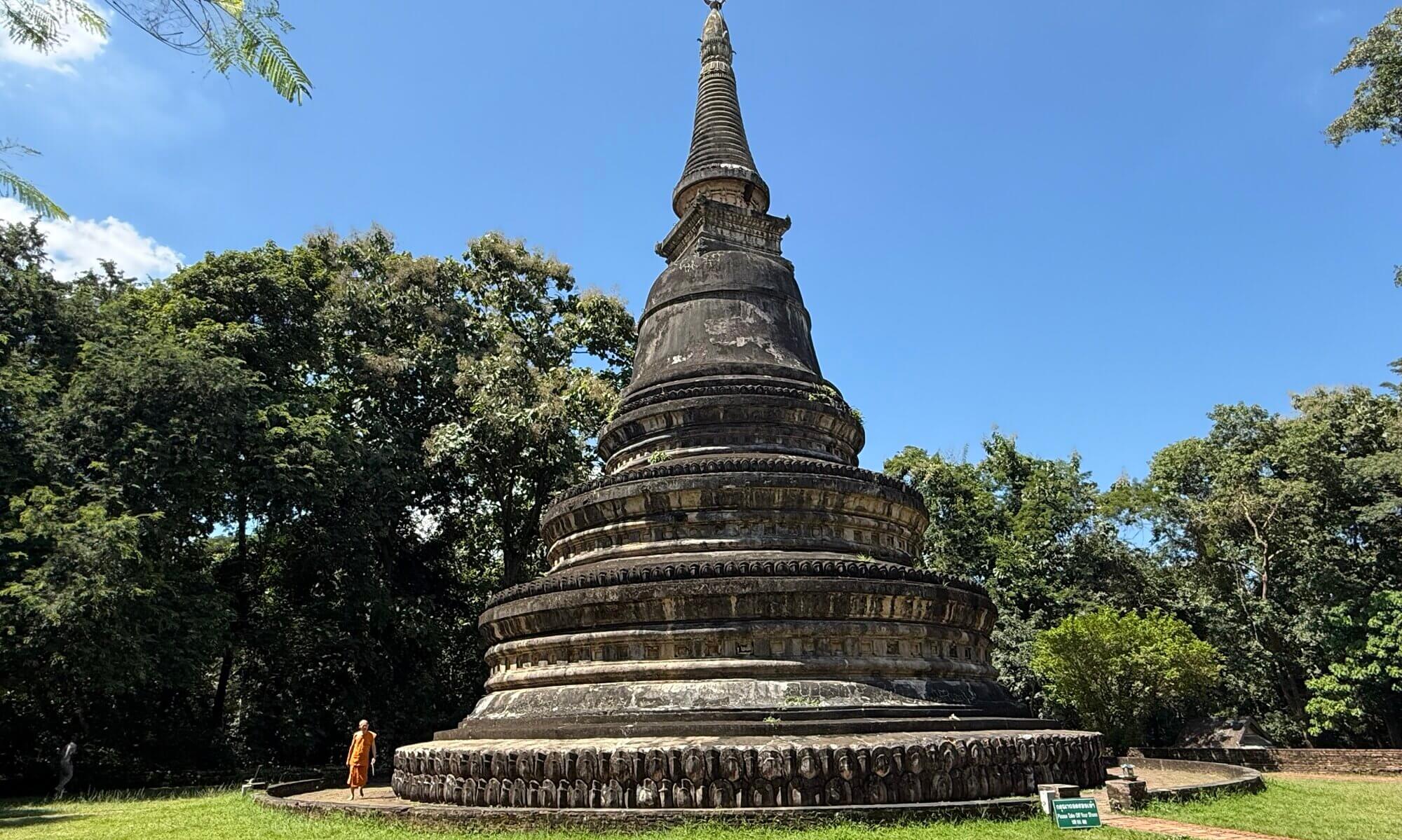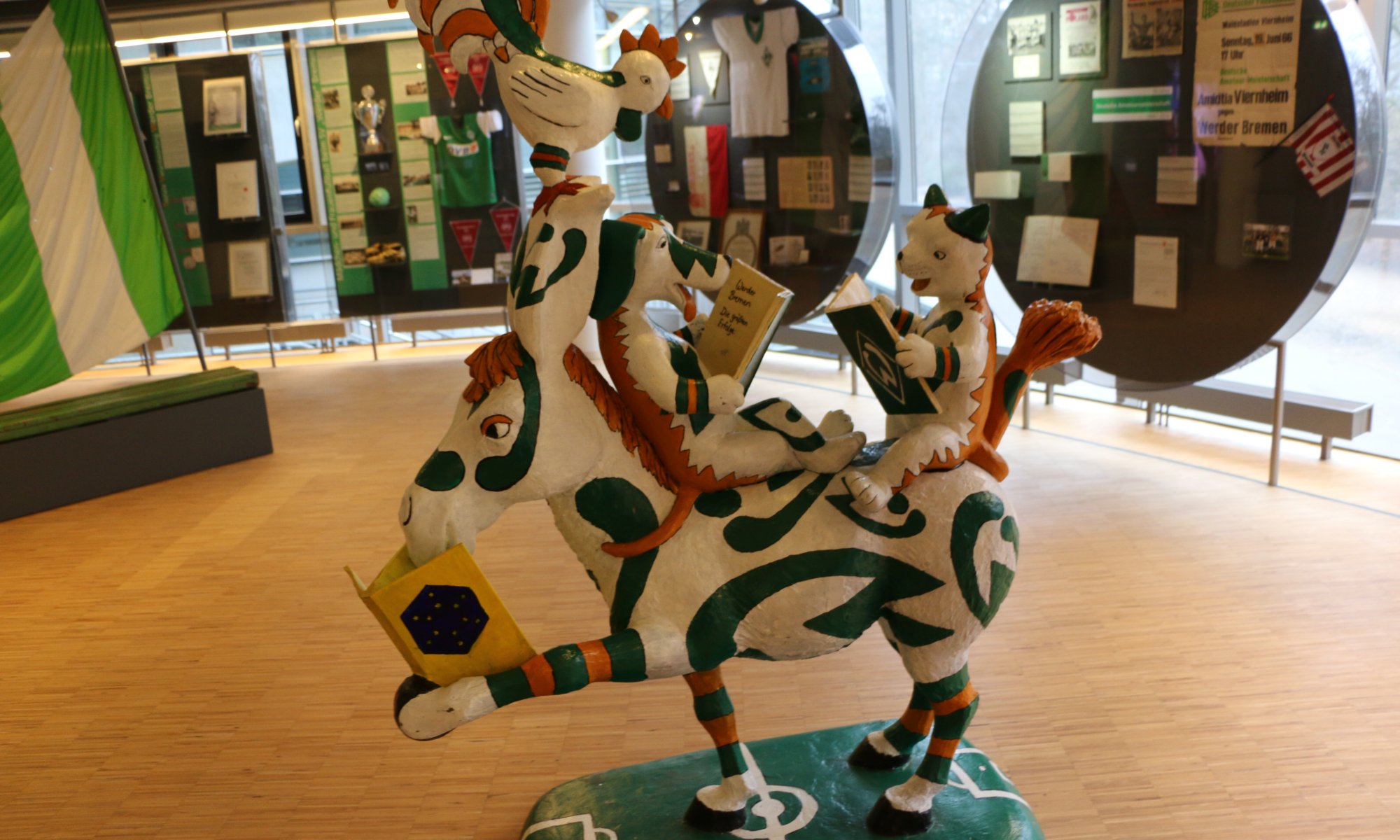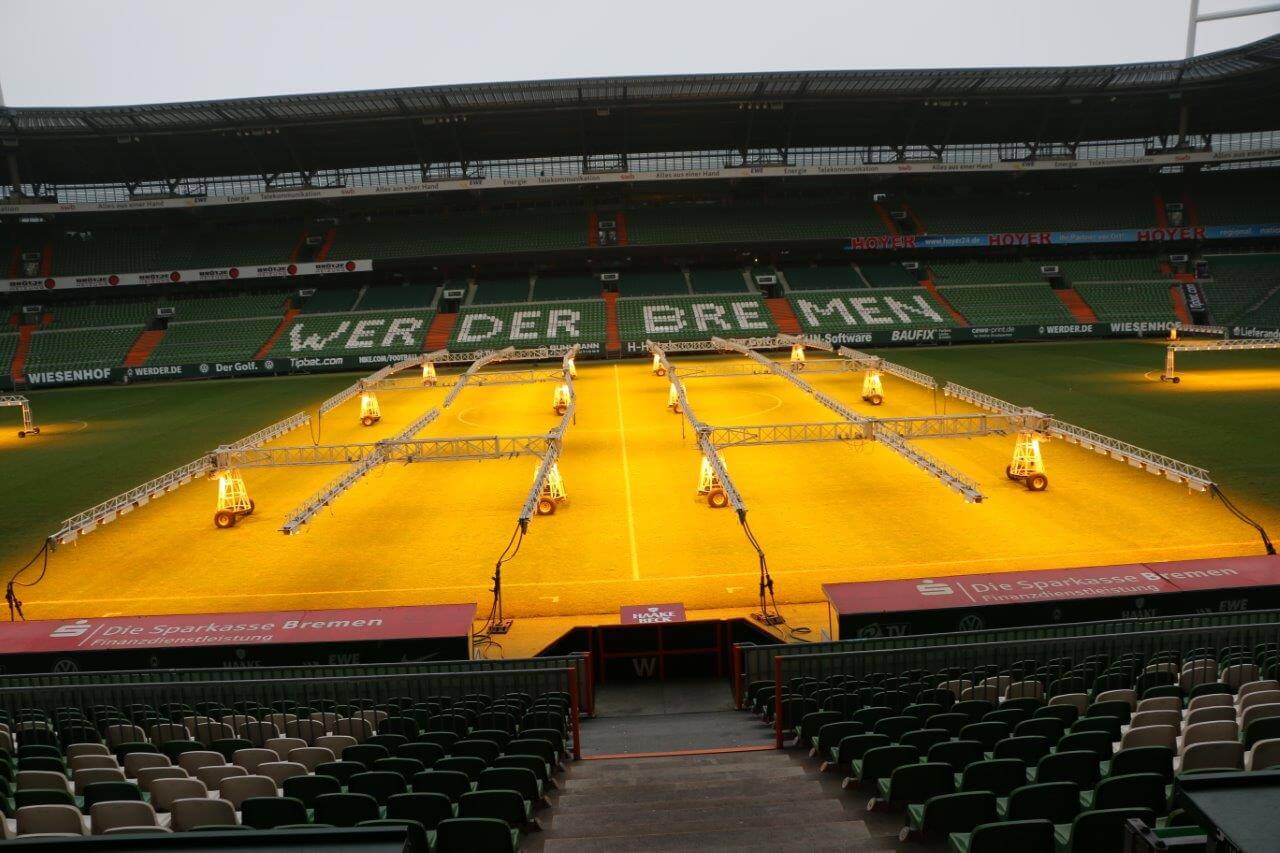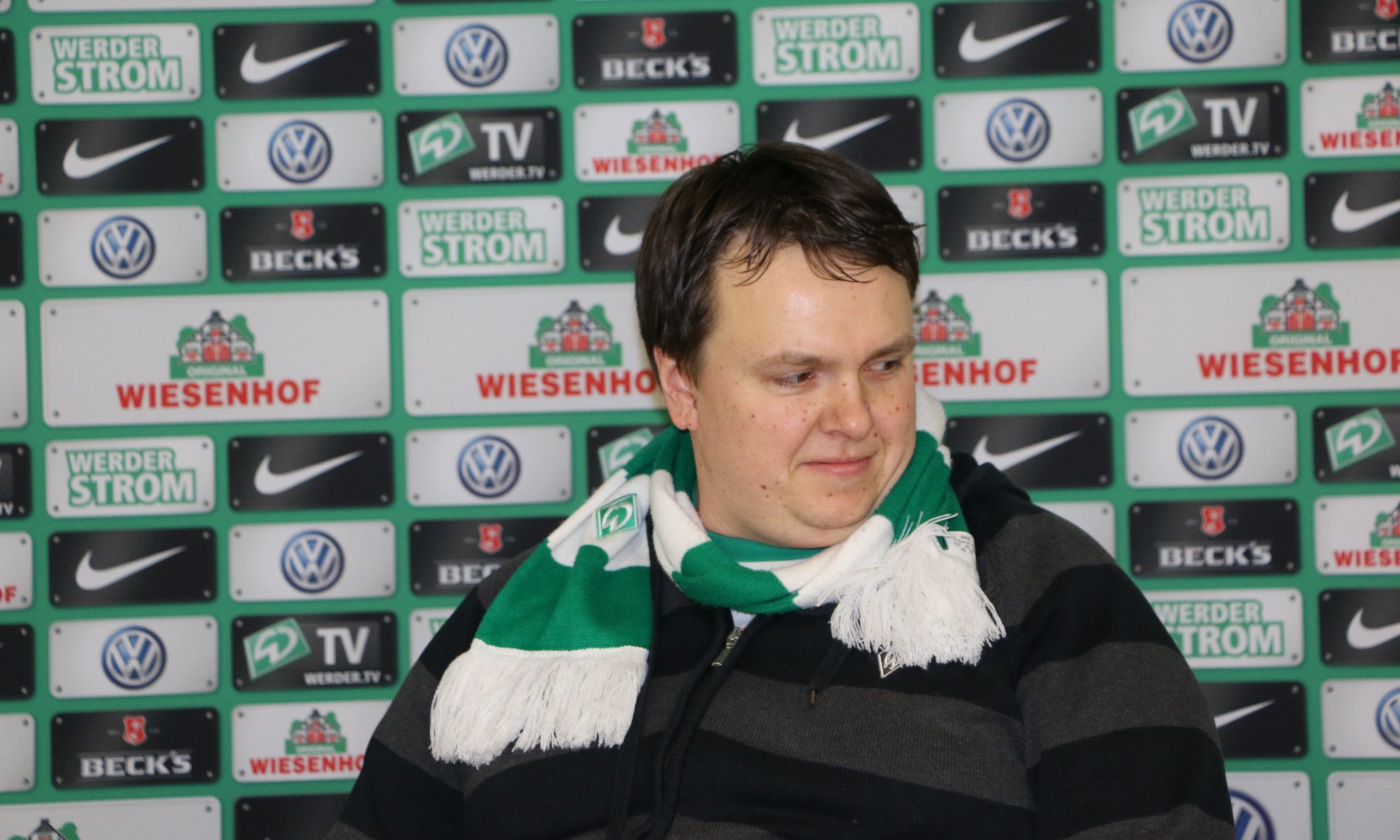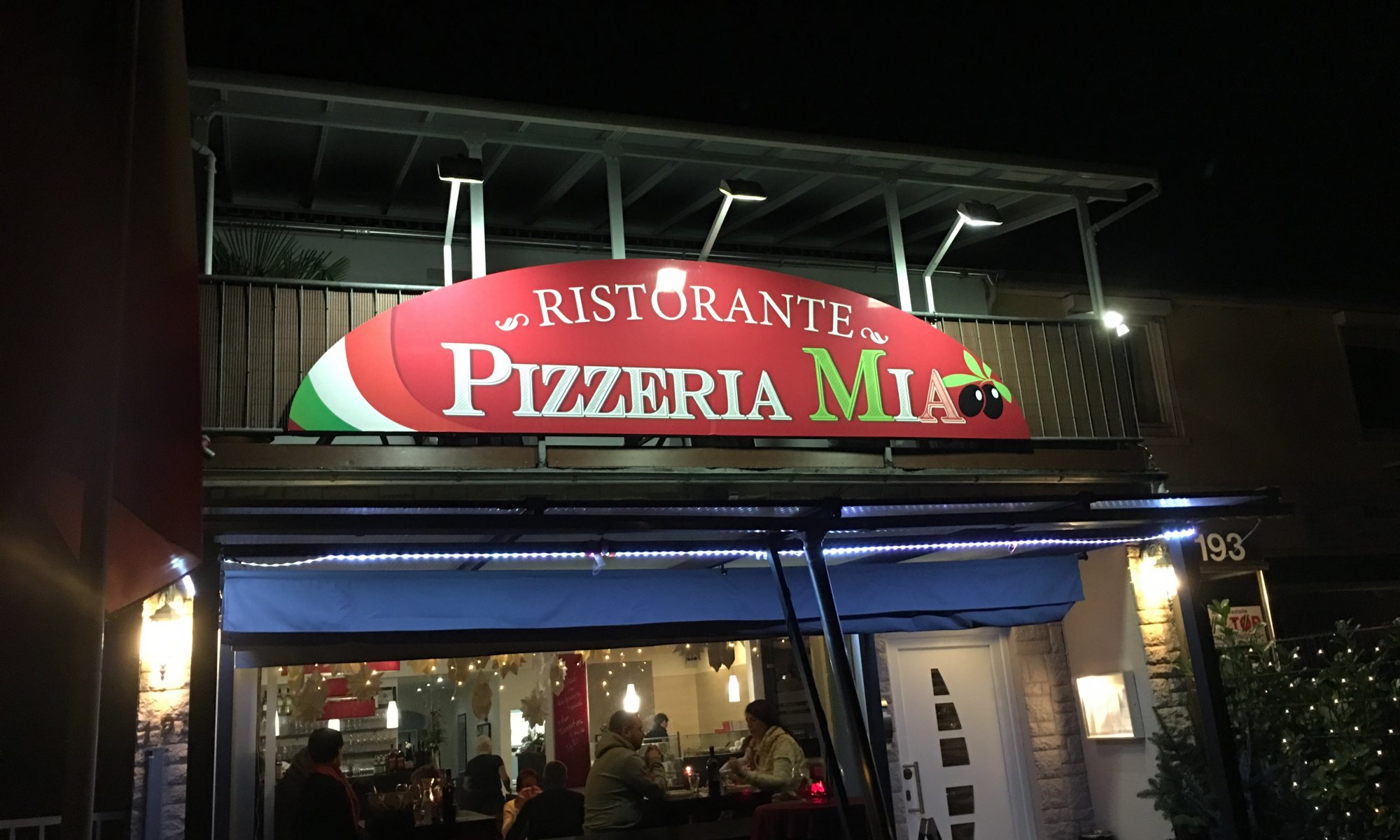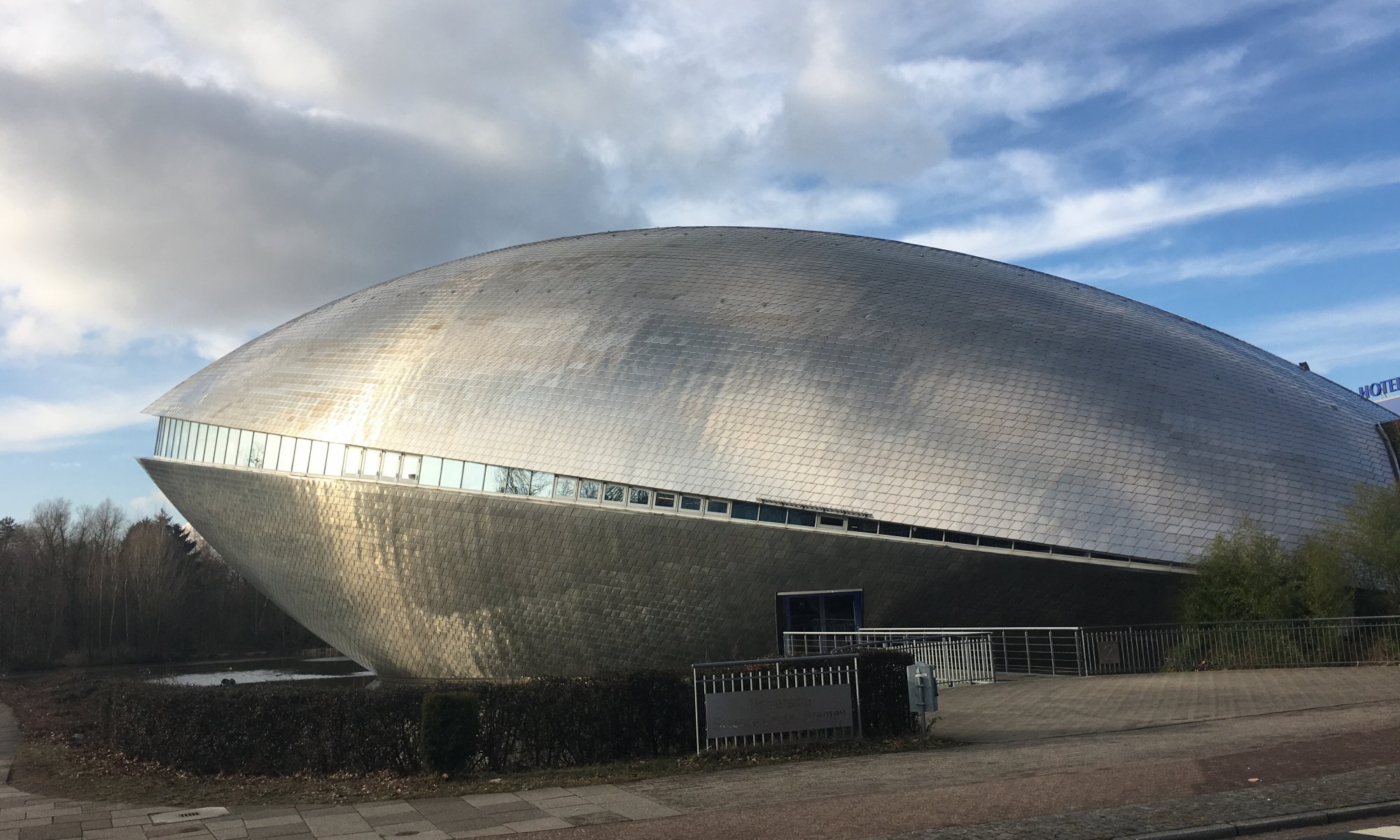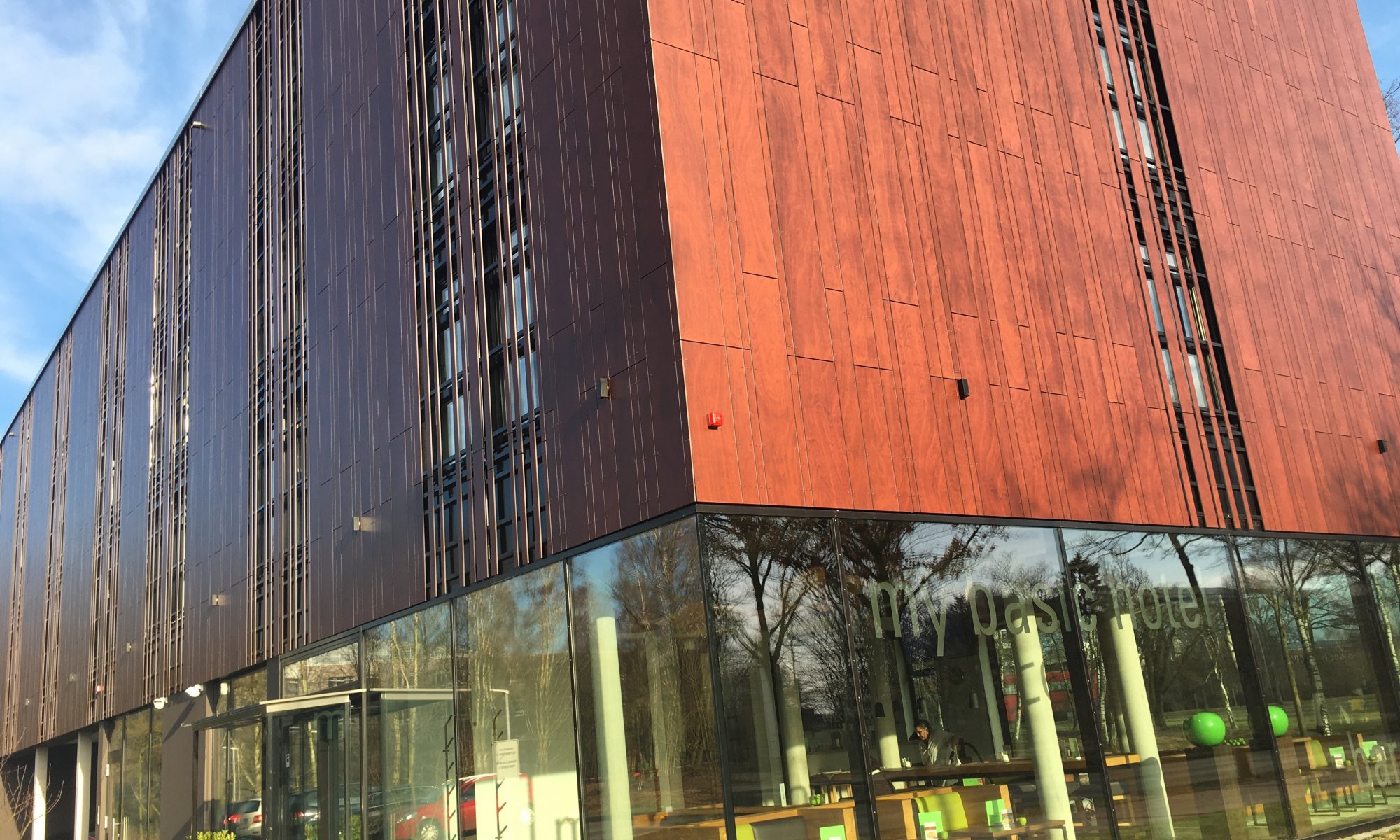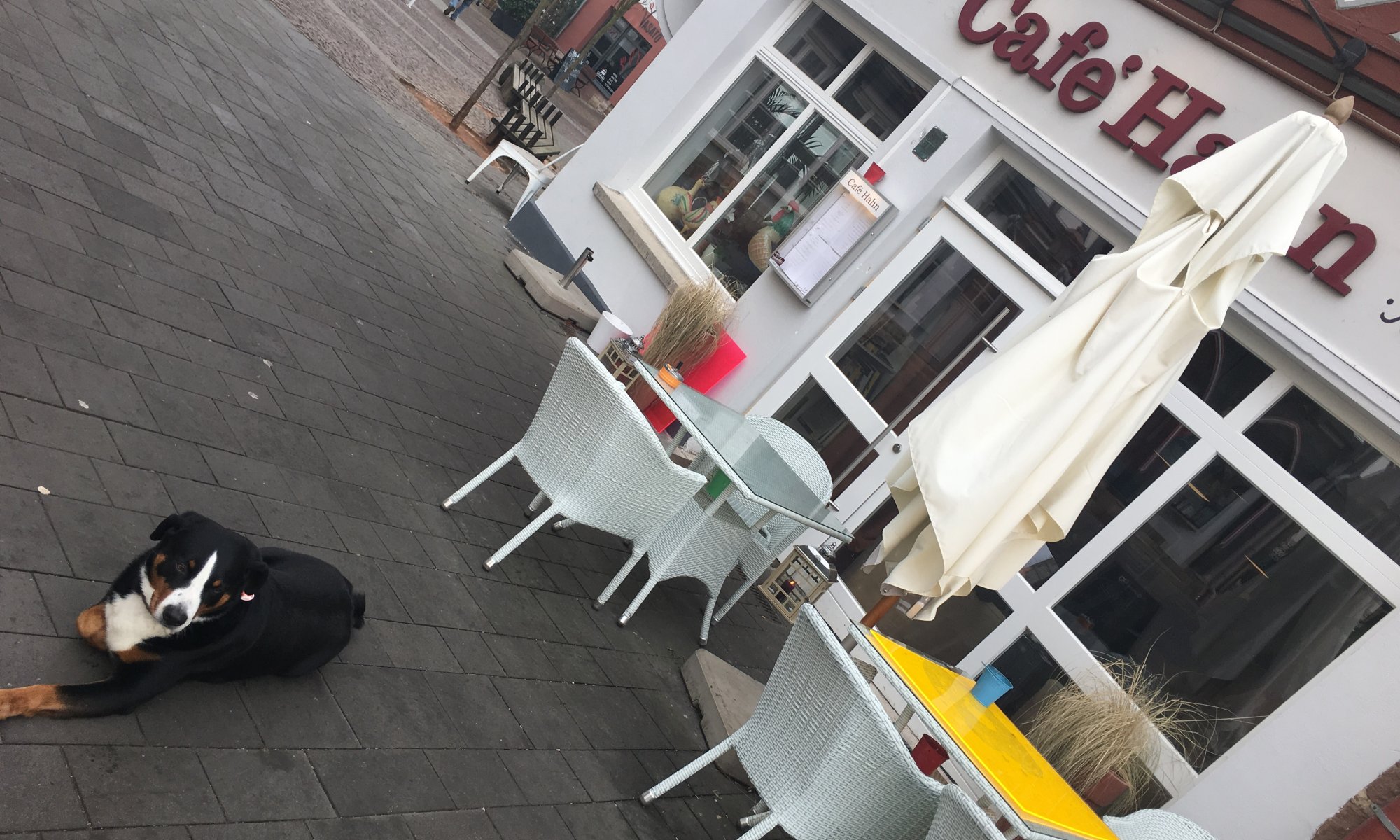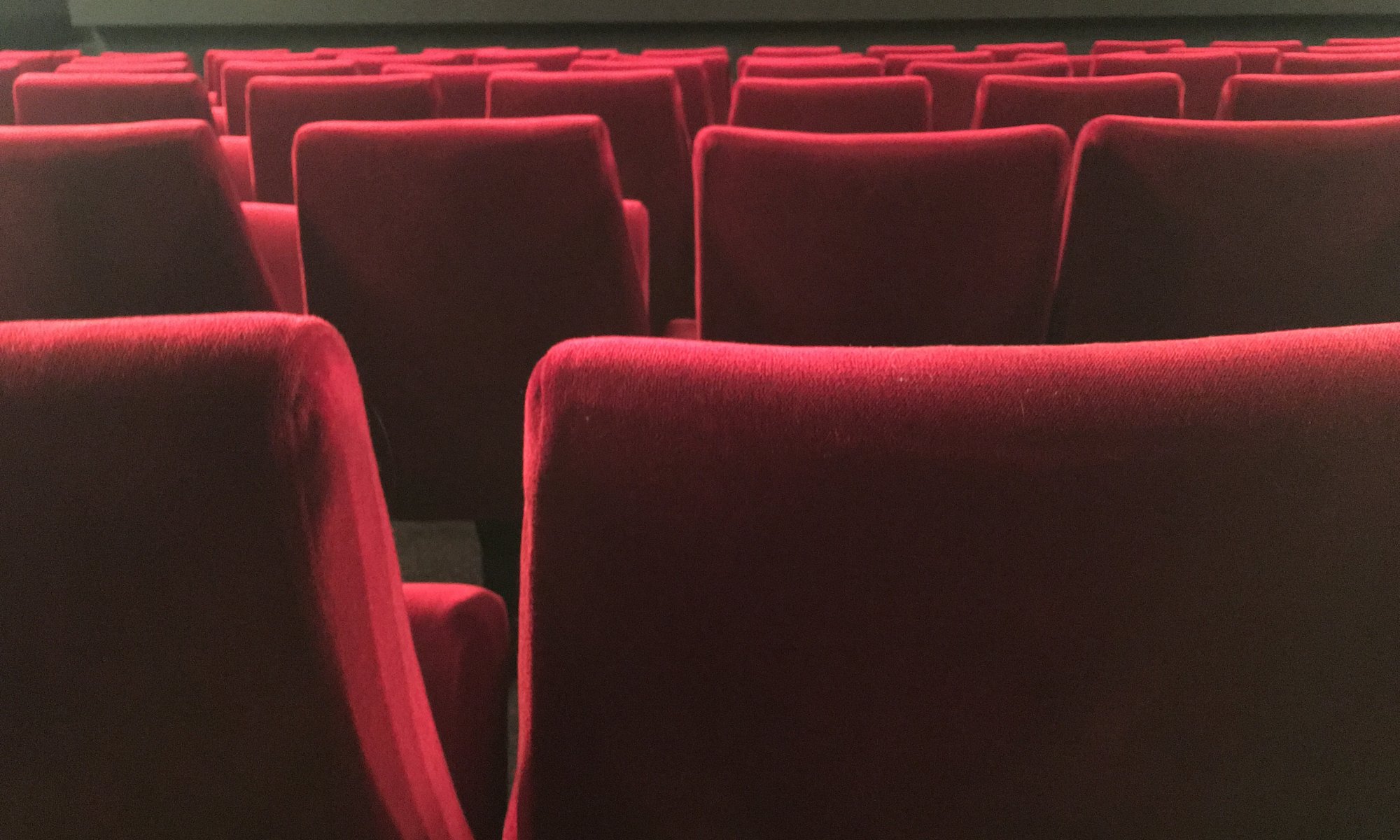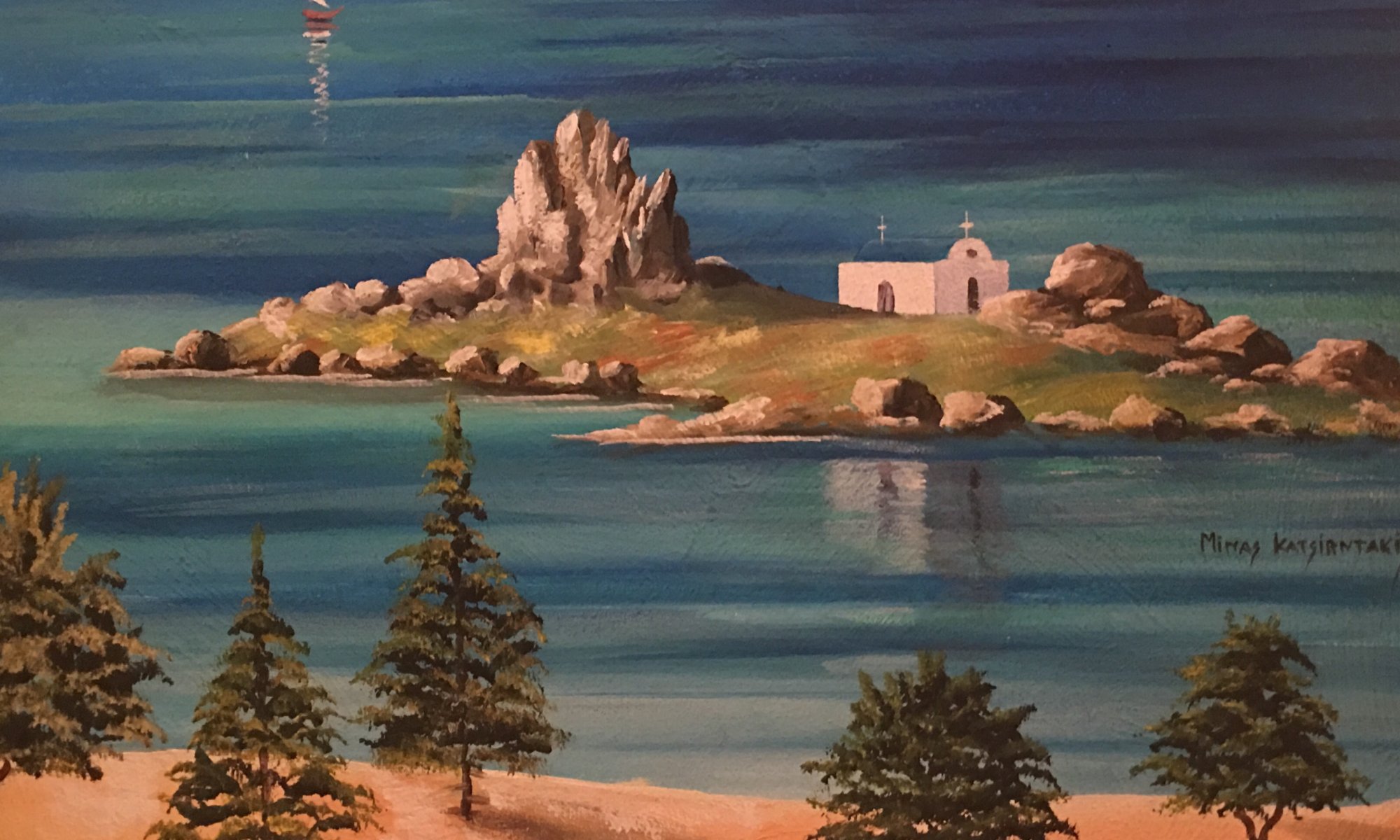The Wuseum is the Werder Bremen museum located at the Weserstadion in Bremen, Germany. You can reach it through the ticket office on the side of the stadium facing the city – and the guided tours through the stadium end here. It is rather small and you’ll have to be a fan of the soccer club to have fun here.
Continue reading “The Wuseum”Exploring the Weserstadion
I’ve been numerous times to the Weserstadion in Bremen, Germany – as a visitor in the Ostkurve. Used to the washed concrete on the first level used by the masses. This time we came here on a Sunday morning to take a guided tour and together with the greenkeeper we were the only people inside the stadium; a unique atmosphere.
Continue reading “Exploring the Weserstadion”Press conference
Pizzeria Mia
The Pizzeria Mia is a nice little Italian restaurant in Oberneuland belonging to Bremen, Germany. They have only a limited number of seats but a good menu with good quality dishes. We tried some pizza here which was quite worth the travel time from our hotel.
Continue reading “Pizzeria Mia”The Universum
The Universum is an interactive science museum in Bremen, Germany. It was opened in the year 2000 and offers 250 interactive items on 4000 square meters. The three areas of the exhibition are nature, human, and technology. Attached you’ll find an outdoor area with different items and a tower to climb up.
Continue reading “The Universum”Seven things
The 7Things hotel in Bremen, Germany is nicely designed hotel which follows the rule of less is more. The most important feature is that it is directly next to the Universum, an interactive science museum. The rooms are nice and we got a family room with a separated children’s room.
Continue reading “Seven things”Café Hahn
It is an institution in Fritzlar, Germany: the Café Hahn, directly located at the central market place. It had several styles over the years and now offers an art coffee bar with seats in very different styles and you can find books and board games. Continue reading “Café Hahn”
Schiller-Lichtspiele
The only cinema in Hann. Münden, Germany is the Schiller-Lichtspiele located in a backyard of the main pedestrian street of the city. While many people go to Göttingen and Kassel to watch movies in big cinemas, it is also a nice idea to visit the local restaurants before enjoying a blockbuster. Continue reading “Schiller-Lichtspiele”
Kreta
The Kreta is a Greek restaurant in Hann. Münden, Germany and one of the rare places to get some gyros in the town. It is named after the big Greek island Κρήτη (Kriti or Crete) and located in the Lange Straße, the main pedestrian street of Hann. Münden. Continue reading “Kreta”
Miniatur-Wunderland
The Miniatur-Wunderland in Hamburg, Germany is world’s largest miniature railway and one of the most famous sights in Germany. It is located within the Speicherstadt – the old goods storage – close to the harbour and the new Elbphilharmonie. The miniature world is still growing but it already covers 1500 m² and more then 1000 trains are running here. Continue reading “Miniatur-Wunderland”
